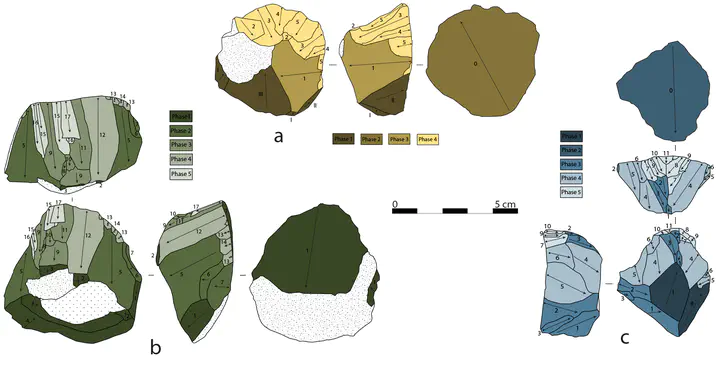
Abstract
The Protoaurignacian is one of the European techno-complexes that marks the beginning of the Upper Paleolithic. During this time bladelet implements, frequently intended to be hafted in composite tools, become the primary goal of lithic production. The growing number of technological investigations carried out on several assemblages has revealed that, in most cases, bladelets are not the result of the reduction of blade cores. However, the detailed procedures involved in the production of blades and bladelets have rarely been reconstructed. Here we report on diacritic investigations of early stage and exhausted cores from the Protoaurignacian layers of Fumane Cave in northeastern Italy. We show that core reduction is influenced by two distinct operational concepts that relate to the manufacture of different predetermined products. The first is characterized by a linear and consecutive knapping progression that aims to obtain blades and, to a minor extent, bladelets with sub-parallel edges. The second is characterized instead by an alternated knapping progression that is exclusively used to produce slender bladelets with a convergent shape. We also show that carinated cores do not significantly differ, technologically, from semi-circumferential bladelet cores. We conclude by suggesting that there existed strong technological traditions shared between hunter–gatherers across the geographical extent of the Protoaurignacian.